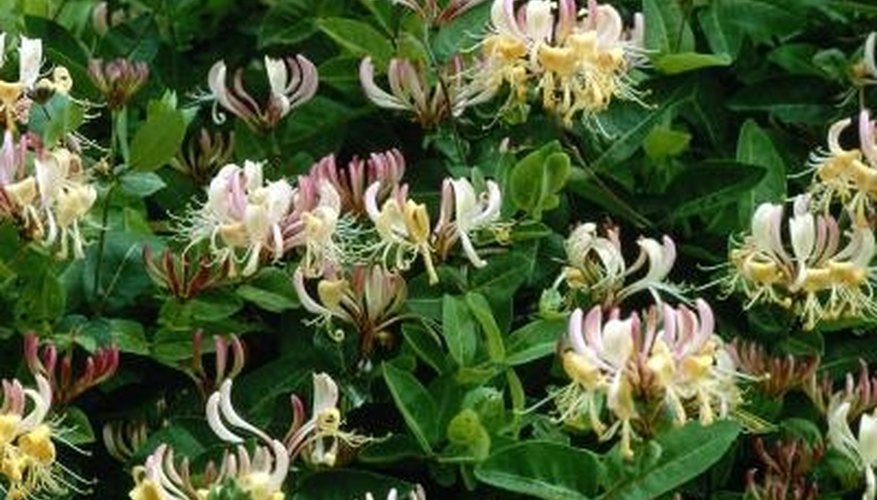Honeysuckle is a popular vine that is known for its sweet smell and lots of flowers that attract pollinators. There are over 180 species of honeysuckle, so there are a lot of fragrant types to choose from. But which one is best for your yard?
When selecting a fragrant honeysuckle, some of the top factors to consider are:
Growth Habit
-
Vining types like Lonicera sempervirens are best for growing on trellises, fences and arbors.
-
Shrubby bushy varieties like Lonicera tatarica work well for hedges and screens.
-
More compact dwarf cultivars are ideal for containers and smaller spaces.
Bloom Time
-
Spring bloomers like Lonicera tellmanniana provide early season fragrance.
-
Most honeysuckle species flower during the summer for peak scent.
-
Some reblooming kinds like Lonicera x brownii extend fragrance into fall.
Flower Color
- Honeysuckle blooms come in white, yellow, orange and red tones. Most are fragrant!
Scent Intensity
- Subtly scented to strongly fragrant options are available. Smell varieties firsthand before choosing.
Invasiveness
-
Ensure the honeysuckle species or cultivar is non-invasive for your region.
-
Avoid highly aggressive types like Lonicera japonica and Lonicera maackii.
Hardiness
- Select a honeysuckle suited to your USDA plant hardiness zone (most range from zones 4-9).
Sun Exposure
- Part sun to full sun is ideal for most honeysuckles. Dappled light suits dwarf varieties.
The Most Fragrant Honeysuckle Contenders
Now let’s explore some of the top candidates for the most exquisitely scented honeysuckle.
Lonicera Periclymenum – Common Honeysuckle
This plant, which is also known as woodbine or European honeysuckle, is famous for having a strong, sweet scent. It’s a familiar sight rambling over hedgerows and trees. Some super aromatic L. periclymenum cultivars include:
-
‘Belgica’ – Very fragrant purple and cream flowers
-
‘Graham Thomas’ – Pale yellow, richly scented blooms
-
‘Serotina’ – Abundant late summer-fall flowers with robust aroma
-
‘Sweet Sue’ – Prolific bloomer with extremely fragrant white and yellow blossoms
Lonicera x Brownii – Brown’s Honeysuckle
This hybrid between L. japonica and L. sempervirens bears exceptionally fragrant flowers over a long bloom season from spring to fall. ‘Dropmore Scarlet’ is a first-rate cultivar.
Lonicera x Heckrottii – Goldflame Honeysuckle
A cross between L. sempervirens and L. america, its flowers range from deep pink to creamy yellow and smell sweet and lovely.
Lonicera Japonica – Japanese Honeysuckle
Japanese honeysuckle is valued for its sweet, strong scent, even though it can be invasive. ‘Aureoreticulata’ and ‘Purpurea’ are two wonderfully fragrant cultivars. Use non-vining types.
Lonicera Sempervirens – Coral Honeysuckle
A native, non-invasive vine with clusters of orange-red, nectar-rich, mildly fragrant blooms. ‘Major Wheeler’ and ‘John Clayton’ are outstanding scented varieties.
Other Noteworthy Fragrant Varieties
Some other honeysuckle varieties with fantastic fragrance include:
-
Lonicera x americana ‘Superba’ – Excellent lemony aroma
-
Lonicera hildebrandiana – Rare but wonderfully scented
-
Lonicera tragophylla – Unique fragrant yellow flowers
Growing Tips for Fragrant Honeysuckle Vines
Follow these tips to grow thriving, aromatic honeysuckle vines:
-
Plant in well-draining soil enriched with compost. Establish in early spring.
-
Install sturdy trellises, fences or arbors for climbing types.
-
Water regularly the first year, then weekly in droughts once established.
-
Apply mulch to retain moisture and reduce weeds.
-
Prune lightly after flowering to shape and improve airflow.
-
Monitor for pests like spider mites, aphids, beetles. Treat promptly.
-
Use fungicides and improve air circulation if powdery mildew occurs.
Choosing the Best Honeysuckle for You
When selecting the most fragrant honeysuckle variety for your unique needs, consider the growth habit, bloom time, flower color, scent intensity, invasiveness, hardiness and sunlight needs.
Smell options firsthand at a local nursery when possible. Plant aroma powerhouses like Lonicera periclymenum ‘Graham Thomas’, Lonicera x heckrottii ‘Gold Flame’ or Lonicera x brownii ‘Dropmore Scarlet’ to perfume your garden with heavenly honeysuckle essence.
With proper selection and care, you can enjoy wafting honeysuckle fragrance in your outdoor spaces for years to come. Let these sweetly scented vines fill your landscape with nostalgic, romantic perfume.

Lonicera japonica ‘Aureoreticulata’ (Image credit: Alamy/Biosphoto)
Strong and often evergreen, the oval leaves have golden veins running through them, and from June to fall, fragrant white flowers turn yellow as they mature.
Good for Hiding untidy features, filling difficult corners.
Hardiness zone 4-9
Height 3-6m (10-20ft)
Also Tolerates very hard pruning, but may be invasive in some areas.
Lonicera x heckrotii ‘Gold Flame’ (Image credit: Alamy/Robert Wyatt)
Partially evergreen, with blue-tinted foliage and fragrant, pink buds opening to bright orange-yellow flowers from July to September. Shrubs are available to buy from Nature Hills.
Good for An obelisk, or house wall.
Hardiness zone 4-9
Height 3-5m (10-15ft)
Also try Shade-loving Lonicera x tellmanniana
Q&A – Do you have any suggestions for fragrant honeysuckle?
FAQ
Which is the strongest smelling honeysuckle?
One of the more vigorous and certainly among the most fragrant honeysuckle varieties, Lonicera Gold Flame is a deciduous or semi-evergreen.
Which honeysuckle vines are fragrant?
Lonicera flava, also known as Yellow Honeysuckle, is a native North American vine that is known for its fragrant, tube-shaped yellow flowers.
What is the fast growing scented honeysuckle?
Lonicera japonica Halliana is a climbing honeysuckle that grows quickly and is evergreen. It has highly fragrant white flowers that turn creamy-yellow when they are pollinated. Like many honeysuckle it benefits from a free draining soil condition and is very much at home scrambling through other climbers or even a hedge.
What kind of honeysuckle blooms all summer?
(Lonicera sempervirens ‘Major Wheeler’) – Offers blazing red and gold blooms all summer long. Vigorous and mildew-free, growing 6-10 ft tall in zones 4-8. May 24, 2024.
